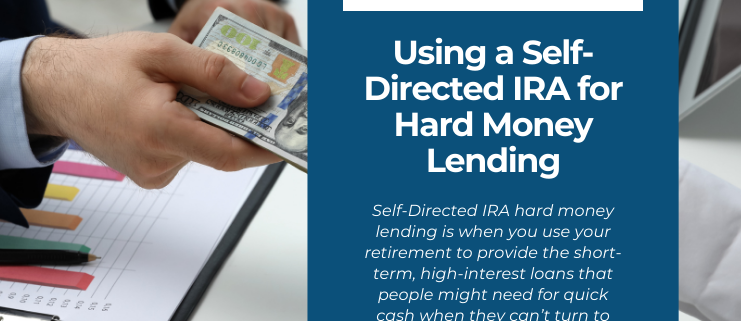Using a Self-Directed IRA for Hard Money Lending
What makes money “hard”? Simple: using collateral to secure the loan. Typically, a hard money loan is a short-term loan, like a bridge loan, requiring the borrower to put up an asset as collateral in case they default on the loan. And while you can use a Self-Directed IRA for all sorts of loan investments—from mortgages to car notes—hard money lending has some unique appeal thanks to the fact that it’s secured and shorter-term, which makes it more quick to bear fruit for your retirement account.
What is Hard Money Lending in a Self-Directed IRA?
Self-Directed IRA hard money lending is when you use your retirement to provide the short-term, high-interest loans that people might need for quick cash when they can’t turn to traditional bank loans. The fact that it’s higher interest is appealing to you, the investor, because it means that you can see rewards on this money that are higher than the interest rates in the general marketplace. And since they’re secured loans, you have a greater degree of confidence that someone is going to pay them back.
There are a few characteristic that make up a hard money loan:
- It’s short-term, meaning that the terms typically last from 6 months to a few years—which is in contrast to a mortgage loan, which can last 30 years.
- The interest rates are higher because it’s shorter-term, which helps negate the risk o the parter of the lender.
- Typically, hard money lending is secured by real estate. Real estate investors typically seek out hard money loans because they need to make a purchase. This property often ends up being the collateral in the loan.
If you know where to find the right borrowers—and people who aren’t connected to you personally, since that wouldn’t qualify as a valid retirement investment—then a hard money loan might be a great way to build wealth in your retirement account.
Setting Up a Self-Directed IRA for Hard Money Lending
First, you’ll need a Self-Directed IRA. You’ll often need a Self-Directed IRA custodian who can specialize in Self-Directed IRAs, handling the administration side of hard money lending to ensure you’re complying with all the regulations.
You’ll also need money in your account. After all, the appeal of hard money lending is that the borrower is getting a quick infusion of cash. Funding the account may involve a direct rollover from a 401(k) or another IRA, or a contribution to fund your account.
Finally, remember the rules. For example, you can’t personally guarantee the loan, and the investment must be for the benefit of your IRA, not for personal use. Any personal involvement—including your personal guarantee or any personal funds—will disqualify this transaction from being a legitimate retirement investment. As a result, the IRS may come after you for fees and penalties.
Why use a Self-Directed IRA for Hard Money Lending?
Hard money lending can offer higher returns compared to traditional investments. That’s why it can be an attractive option for investors who want to boost their wealth with high interest rates. By incorporating hard money lending into your investment portfolio, you also diversify your account, which helps reduce overall risk.
However, there are also risks with hard money lending. Borrowers may default on their loans, which can affect your returns and may require legal action to resolve. Hard money loans are generally illiquid, meaning it can be challenging to access your funds quickly when needed. If you can withstand these risks, and if you know how hard money lending works, it can be a tremendous way to build wealth with retirement account protections.
Ready to get started? Reach out to us here at American IRA by dialing 866-7500-IRA.



